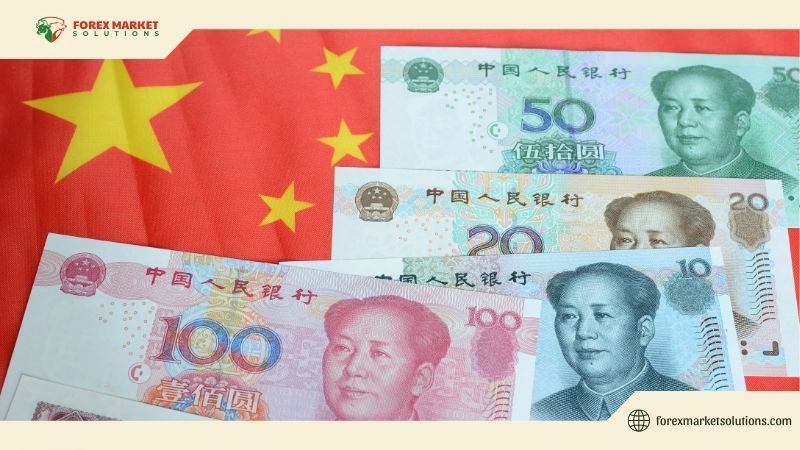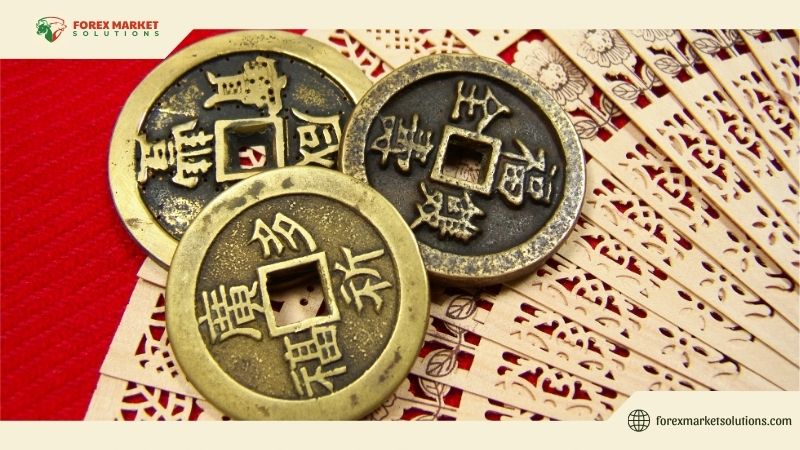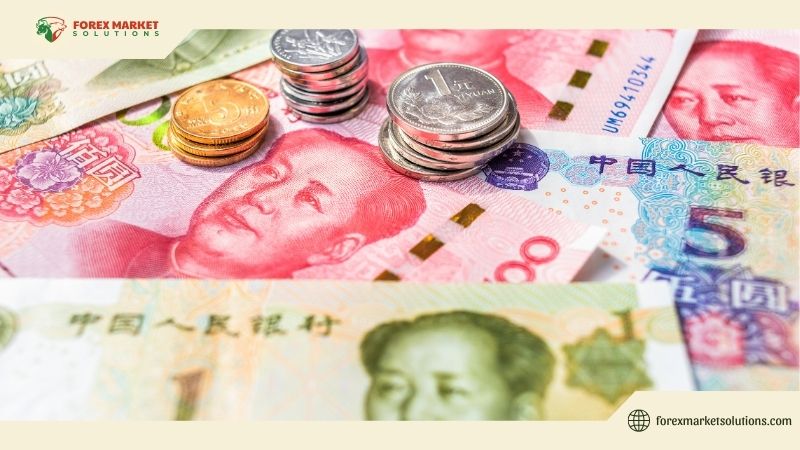Money shapes the world, driving trade, investment, and economic power across borders. For anyone delving into global finance or Forex trading, a common question arises: what is Chinese money called? The answer is the Yuan, officially known as the Renminbi (RMB), the currency of the People’s Republic of China. As China remains a titan in the global economy in 2025, understanding its currency offers more than just trivia—it’s a gateway to grasping its influence on markets, from Beijing’s bustling streets to the Forex charts traders analyze daily. This comprehensive guide unpacks the Yuan’s identity, history, and significance, shedding light on why it matters in today’s financial landscape.

The question of what is Chinese money called opens a door to exploring one of the world’s most impactful currencies. With China’s economy projected to grow further in 2025, fueled by technological innovation and trade dominance, the Yuan plays a pivotal role in international finance. Whether you’re a traveler exchanging cash, an investor eyeing Chinese stocks, or a Forex trader watching USD/CNY, knowing the ins and outs of this currency equips you with valuable insight. Let’s dive into the story of the Yuan, its evolution, and its place in the modern world.
The Basics of Chinese Currency
To answer what is Chinese money called, we start with its formal name: Renminbi, which translates to “people’s currency” in Mandarin. Introduced in 1948 by the Communist Party during China’s civil war, it replaced various regional currencies to unify the nation’s economy. The term “Renminbi” refers to the official currency system, while “Yuan” is the primary unit of account—much like “pound” relates to “sterling” in the UK. In everyday use, both terms are interchangeable, though Yuan is more common globally.
The Yuan is subdivided into smaller units: 10 jiao equal 1 Yuan, and 10 fen equal 1 jiao. Coins circulate for fen and jiao, while paper notes dominate for Yuan denominations, ranging from 1 to 100. In 2025, digital payments via platforms like WeChat Pay and Alipay have largely eclipsed coins, reflecting China’s leap into a cashless society. The symbol for the Yuan is ¥, shared with the Japanese yen but distinguished by context or the prefix “CNY” in financial settings. This dual naming—Renminbi and Yuan—clarifies what is Chinese money called, blending official terminology with practical usage.
Managed by the People’s Bank of China (PBOC), the Yuan’s value is tightly controlled, unlike fully floating currencies like the US dollar. The PBOC sets a daily reference rate against a basket of currencies, allowing a narrow trading band—expanded to ±2% in recent years. This managed float shapes its behavior in Forex markets, a key detail for traders asking what is Chinese money called and how it moves.

A Brief History of the Yuan
The story behind what is Chinese money called is rooted in China’s turbulent 20th century. Before the Renminbi, China used silver-based systems like the tael and foreign currencies during its semi-colonial era. The 1948 launch marked a turning point, aligning with the Communist victory in 1949. Early notes featured socialist imagery—workers, farmers, and Mao Zedong—symbolizing a new economic order.
The Yuan faced challenges in its infancy, including hyperinflation and isolation from global markets. Reforms in the 1980s under Deng Xiaoping opened China to trade, prompting currency modernization. By 1994, the dual exchange rate system (official and market rates) merged, and the Yuan began its journey toward internationalization. In 2016, it joined the IMF’s Special Drawing Rights (SDR) basket alongside the dollar and euro, cementing its global status. By 2025, with China pushing the Digital Yuan (e-CNY), the answer to what is Chinese money called increasingly includes its digital avatar, a pioneer in central bank digital currencies (CBDCs).
This evolution reflects China’s shift from a closed economy to a global powerhouse. The Yuan’s controlled appreciation—rising from 8.27 to around 7.0 against the USD over decades—balances export competitiveness with financial stability, a dynamic traders must understand.
What Is Chinese Money Called in Global Finance?
In 2025, what is Chinese money called carries weight far beyond China’s borders, especially in Forex and international trade. The Yuan, denoted as CNY in trading platforms, is a top-traded currency, with pairs like USD/CNY and EUR/CNY reflecting its economic clout. Its inclusion in the SDR basket underscores its role as a reserve currency, held by central banks worldwide, though it trails the dollar and euro in volume.
The PBOC’s management shapes its Forex behavior. Unlike free-floating currencies, the Yuan’s daily band limits volatility, but economic data—GDP growth, trade balances, or US-China tensions—can push it to the band’s edges. In 2025, with China’s Belt and Road Initiative expanding and the Digital Yuan gaining traction, traders watch these pairs closely. For instance, a stronger Yuan might signal confidence in China’s recovery, while depreciation could hint at export-boosting policies.
Beyond Forex, the Yuan influences global markets through trade. As the world’s manufacturing hub, China denominates many contracts in RMB, encouraging partners to hold it. Offshore Yuan (CNH), traded in hubs like Hong Kong, adds flexibility outside PBOC control, answering what is Chinese money called in a dual onshore-offshore context. This interplay makes the Yuan a key player in 2025’s financial ecosystem.

The Digital Yuan and Future Trends
The rise of the Digital Yuan redefines what is Chinese money called in the modern era. Launched as e-CNY, this CBDC is a digital version of the physical Yuan, controlled by the PBOC via blockchain-like technology. Piloted since 2020, it’s fully operational in 2025, used for everything from retail payments to cross-border transfers. Unlike cryptocurrencies like Bitcoin, it’s centralized, aligning with China’s regulatory framework.
This innovation impacts Forex and beyond. The e-CNY streamlines transactions, reducing reliance on SWIFT and challenging the dollar’s dominance in trade settlements. For traders, it introduces new pairs like e-CNY/USD, though availability depends on broker adoption. In 2025, as nations test their own CBDCs, the Digital Yuan positions China at the forefront, blending tradition with tech-driven finance.
Physical Yuan remains relevant, but its digital sibling signals a shift. Travelers might still exchange ¥100 notes, while traders monitor e-CNY’s global uptake—both facets answering what is Chinese money called in a multifaceted way.
Practical Implications for Traders and Investors
For Forex traders, knowing what is Chinese money called unlocks strategic insights. The Yuan’s managed float means technical analysis—moving averages, support levels—pairs with news watching. A US tariff hike might weaken CNY, while strong Chinese exports could lift it. In 2025, with digital wallets and AI trading platforms, staying updated on Yuan policies via economic calendars or PBOC statements sharpens your edge.
Investors eye the Yuan too. Chinese stocks or bonds often tie to its value—appreciation boosts returns for foreign holders. The Digital Yuan’s cross-border trials could ease investment flows, a trend to watch. Understanding what is Chinese money called bridges trading and long-term wealth-building in China’s orbit.

The Yuan’s Global Reach
The question what is Chinese money called reveals the Yuan, or Renminbi, as a currency of resilience and ambition. From its 1948 roots to its 2025 digital evolution, it mirrors China’s rise, influencing Forex, trade, and investment worldwide. Whether you’re trading USD/CNY or exploring the e-CNY’s potential, this currency’s story offers lessons and opportunities. In a volatile 2025, the Yuan stands as both a symbol and a tool, shaping markets with every transaction.
Want to master currencies and trading? Follow Forex Market Solutions for expert insights and strategies to succeed in 2025 and beyond.
